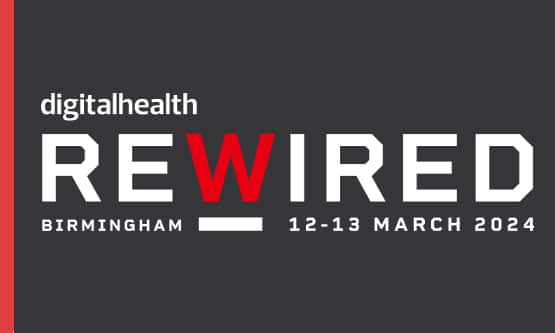In today’s demanding industrial landscape, the urgency of establishing Industrial Labor Centers of Excellence (COEs) has never been greater. COEs—specialized programs or facilities that provide high-quality, mulit-disciplinary care—are at the forefront of revolutionizing how we approach workforce wellness and safety by integrating technology, data, and proactive interventions. For organizations committed to sustainable growth and a healthier, more engaged workforce, adopting and championing these centers is a necessity, not a luxury. Rich Walsh, a recognized expert in workforce wellness and VP of Business Development at Amp Health, recently spoke with us to share his insights on the rise of Industrial Labor Centers of Excellence (COEs) and how these specialized programs can transform workforce wellness and safety.
What is driving the rise of Industrial Labor Centers of Excellence (COEs) in today’s workplace?
Rich Walsh, VP of Business Development – Amp Health: Centers of Excellence are emerging as strategic responses to the rising risks facing today’s industrial workforce. Deskless and physically demanding roles, especially in manufacturing, construction, and logistics, present unique health challenges, and musculoskeletal disorders (MSDs) are an outsized driver of those challenges. COEs address the costly impacts of absenteeism, turnover, and lost productivity by providing targeted injury prevention, human performance optimization, and mental fitness support. With this approach, organizations are better equipped to retain talent, reduce risks, and foster a sustainable, high-performing workforce. DataPoint.
How do COEs impact an organization’s bottom line?
Walsh: The financial and operational benefits of COEs are undeniable. By preventing injuries before they occur and engaging employees in their own well-being, COEs enhance retention, productivity, and overall workforce health. Organizations that prioritize COEs see significant reductions in healthcare costs, fewer lost workdays, and minimized expenses associated with rehiring and retraining. These programs have a direct impact on financial performance, making it evident that COEs aren’t just beneficial—they’re indispensable for growth and resilience.
What are the key components of a successful COE?
Walsh: A high-impact COE operates through five critical pillars:
1. Leadership Commitment: Executive support is essential for promoting employee health and reducing injuries, setting a standard that permeates the entire organization.
2. Cross-Departmental Collaboration: Engaging HR, Health & Safety, and direct employee input ensures COE programs are relevant, effective, and aligned with real workforce needs.
3. Data-Driven Strategies: With real-time insights, COEs utilize tools like motion capture and AI to personalize injury prevention efforts, continually improving employee outcomes.
4. Continuous Improvement: A successful COE remains adaptive, regularly assessing and enhancing protocols to meet evolving challenges, thus ensuring programs stay proactive and impactful.
5.High-Fidelity Data Integration: A relentless pursuit of detailed, high-quality data strengthens COE risk prediction models and optimizes prevention workflows, empowering organizations to make proactive, data-driven decisions with precision.
How do COEs leverage healthcare technology to support industrial laborers?
Walsh: Advanced technology underpins the COE model, bringing precision and agility to workforce wellness efforts:
– Computer Vision Technology: This enables accurate, real-time assessments of movement, providing timely insights that prevent injuries before they happen. It adapts quickly to various roles, ensuring that every worker benefits from proactive, tailored support.
– Real-Time Data Analytics: COEs monitor worker health in real-time, identifying issues before they become injuries.
– Personalized Programs: AI-driven platforms create individualized plans, including exercise regimens and mental wellness tools, accessible through mobile apps for ease of use.
– Feedback Loops: Continuous digital feedback between employees and management sustains engagement and keeps programs relevant, reinforcing compliance and promoting positive outcomes.
How do COEs create long-term engagement among employees?
Walsh: COEs can foster a culture of sustained engagement by investing in personalized care for employees. Recent advancements in technology mean that high-touch, personal care that is customized to both the work environment and the individual worker is available in previously underserved settings at scale. Employees participate in health and wellness programs designed to meet their specific needs, receive regular assessments, and are recognized for their compliance and progress. Many COEs implement gamification, incentivizing participation and making wellness initiatives more interactive and rewarding. The result is a workforce that feels supported and invested in its own health.
How does a COE’s approach cater to new hires and employees with prior injuries?
Walsh: COEs take a thoughtful, progressive approach with new hires and those with previous injuries, following a “crawl-walk-run” methodology. New employees start with comprehensive assessments during onboarding to identify injury risk based on mobility. Those with past injuries receive data-driven monitoring and tailored programs to support recovery and prevent further incidents. This targeted, preventative approach strengthens the organization’s culture of care from day one. Ex:
Beyond healthcare technology, how does Amp Health support the growth of COEs?
Walsh: Amp Health’s roots in elite sports, military applications, and the concept of the “industrial athlete” provide a unique lens through which we view workforce wellness. We believe that integrated technology is a critical element of successful COE formation and development, and we are happy to share observed best practices to maximize impact. As a company we are passionate about learning how people move, and how those movements correlate to injury. Our experience shows that the same performance-focused principles applied to Olympians can elevate industrial laborers’ health and resilience, setting a new standard for workforce wellness.
Final thoughts?
Walsh: A focus on Centers of Excellence is essential to stay competitive, not just in performance but in retention, wellness, and cost efficiency. With the consolidation of wellness solutions into vertically integrated products, COEs deliver the seamless, data-rich insights that today’s performance-driven landscape demands. The shifting tides toward reshoring and a more resilient industrial workforce make COEs vital assets for any organization. Industrial laborers represent a precious workforce segment—one that deserves and requires the proactive, high-quality support that COEs are uniquely positioned to deliver.
About Rich Walsh
With over 25 years in health information technology, Rich Walsh has held key roles at top industry leaders including IBM, Allscripts, Greenway Health, and Wellcentive (now Phillips). As an entrepreneurial leader with deep expertise in emergent market software and data management, Rich has driven innovative growth strategies and forged impactful partnerships throughout his career. Now, as VP of Business Development at Amp Health, he focuses on delivering solutions tailored to industrial labor injury prevention and human performance—ultimately driving workforce cost containment and resiliency. His work continues to shape the future of healthcare technology and data-driven outcomes.







/cdn.vox-cdn.com/uploads/chorus_asset/file/24604962/236618_Mothers_Day_Gift_Guide_2023_WJoel.jpg)


